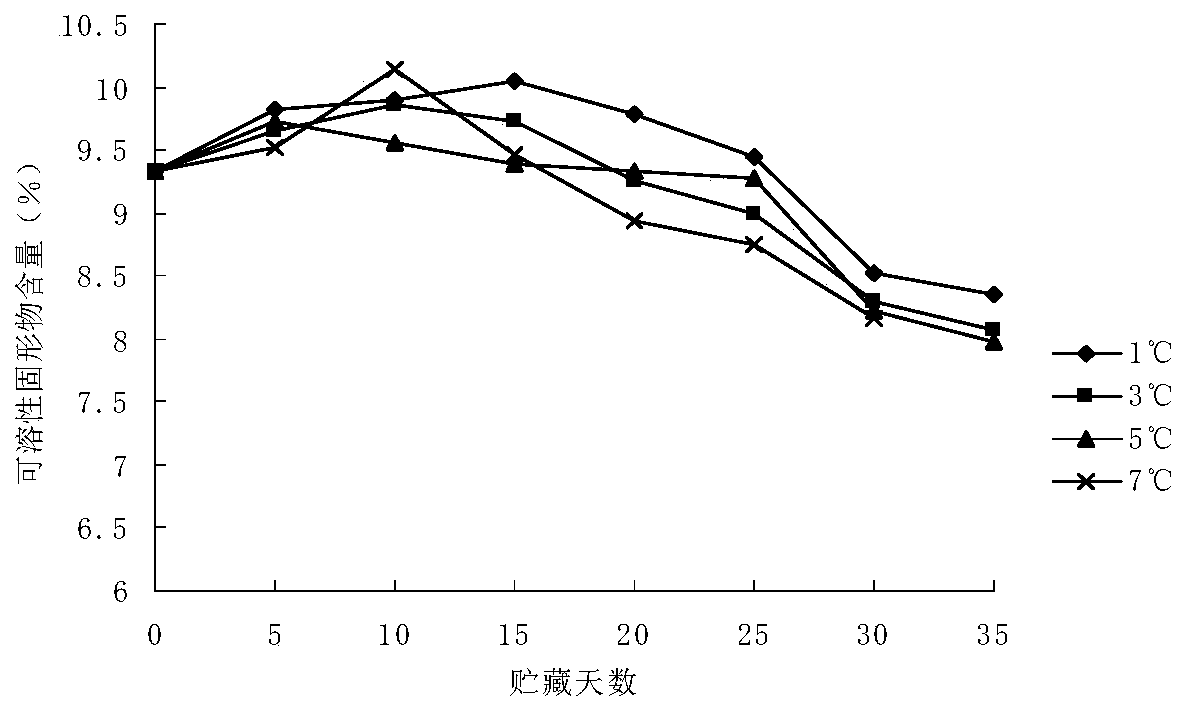Preservation and fresh-keeping method of nectarines, preservation and fresh-keeping reagent and application of preservation and fresh-keeping reagent in preservation and fresh-keeping of nectarines
A fresh-keeping method, nectarine technology, applied in application, fruit and vegetable fresh-keeping, food ingredients as anti-microbial preservation, etc., can solve the problem of reducing the economic value and edible value of fruits, easy condensation and frostbite on the surface of fruits, and intolerance to storage and transportation To achieve the effect of inhibiting the degradation of sugar and acid and the loss of aromatic substances, inhibiting the growth of fungi and bacteria, and maintaining the inherent color and quality
- Summary
- Abstract
- Description
- Claims
- Application Information
AI Technical Summary
Problems solved by technology
Method used
Image
Examples
Embodiment 1
[0041]Taking 'Shangyou 018' nectarine as an example, the comparative test was carried out at 0±0.5°C, 1±0.5°C, 3±0.5°C, 5±0.5°C and 7±0.5°C with a thickness of 0.04mm and a porosity of 0.04mm. The storage effect of nectarine fruits sealed in 5‰ polyethylene film packaging bags was measured every 7 days for fruit respiration intensity, hardness, soluble solids, titratable acid content, fruit weight loss rate, rot rate, etc. Suitable refrigeration temperature. The conclusions are as follows: the storage period of fruit at 7℃ is 5-10d; the storage period of fruit at 5℃ is 10-15d; the storage period of fruit at 1-3℃ can be within 20d.
[0042] (1) Effects of different cold storage on fruit respiration intensity
[0043] Depend on figure 1 It can be seen that the respiration intensity of fruits stored at 7°C and 5°C is significantly higher than that of fruits stored at 1°C and 3°C, and there is no significant difference between 1°C and 3°C. Fruits stored at 7°C had a respiratory...
Embodiment 2-4、 comparative example 1-4
[0053] Select the same degree of maturity (eight ripe), uniform size, no mechanical damage, no fruit by disease and insect pests, and be divided into the following five treatment groups:
Embodiment 2
[0054] Embodiment 2: use concentration to be respectively 33.5ug.kg -1 .FW and 80ug.kg -1 .FW's Ginkgo leaf and Ginkgo seed extracts are evenly sprayed on the surface of the fruit, and refrigerated in a cold storage with a temperature of 5-7°C and a relative humidity of 85-90%;
PUM
 Login to View More
Login to View More Abstract
Description
Claims
Application Information
 Login to View More
Login to View More - R&D
- Intellectual Property
- Life Sciences
- Materials
- Tech Scout
- Unparalleled Data Quality
- Higher Quality Content
- 60% Fewer Hallucinations
Browse by: Latest US Patents, China's latest patents, Technical Efficacy Thesaurus, Application Domain, Technology Topic, Popular Technical Reports.
© 2025 PatSnap. All rights reserved.Legal|Privacy policy|Modern Slavery Act Transparency Statement|Sitemap|About US| Contact US: help@patsnap.com



